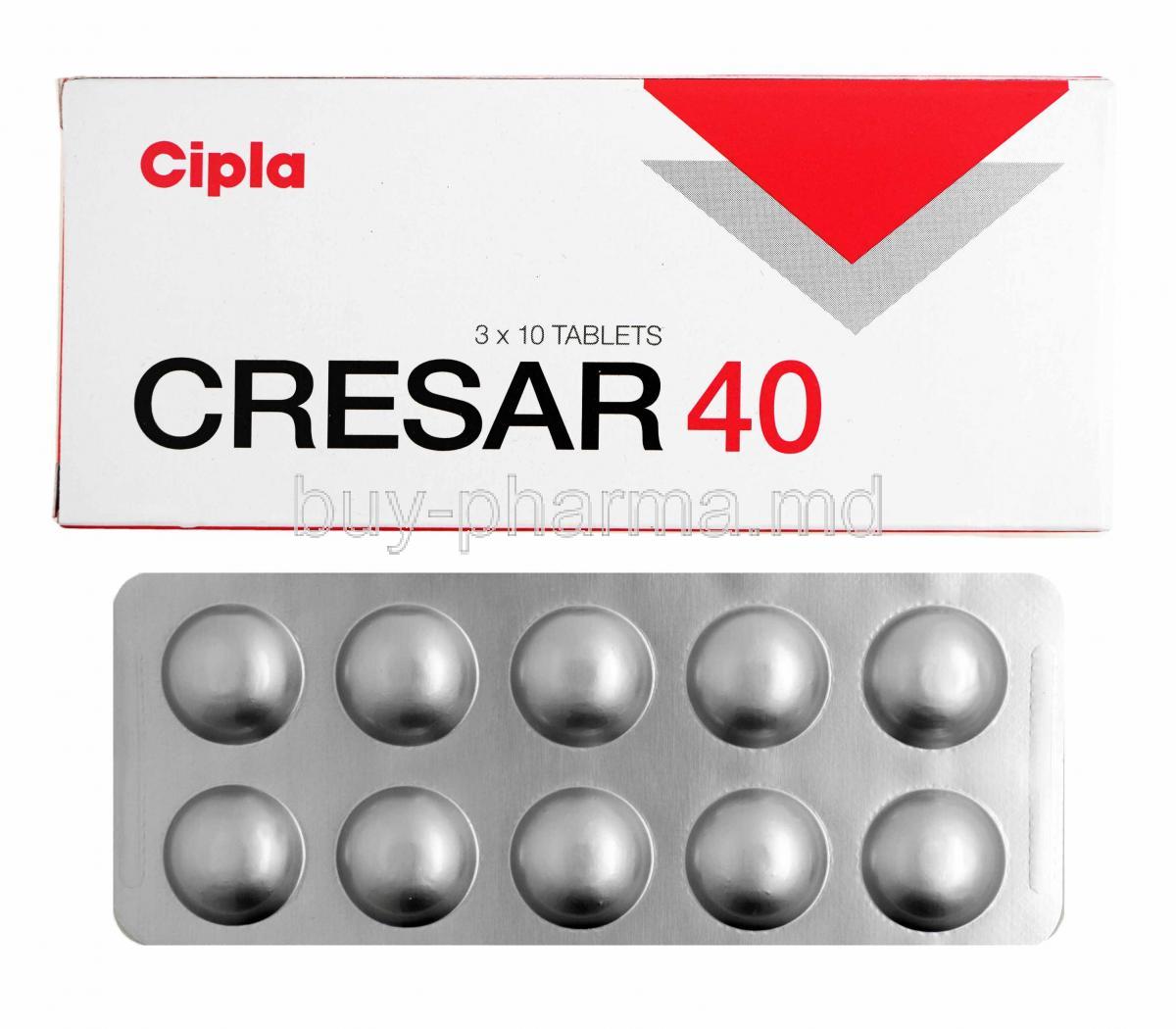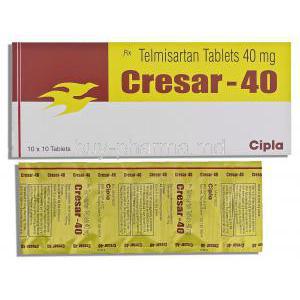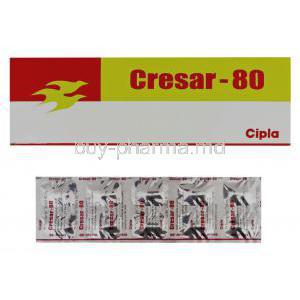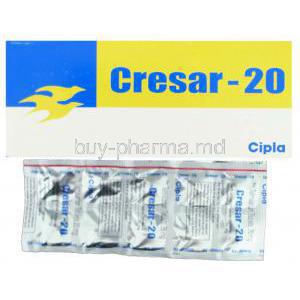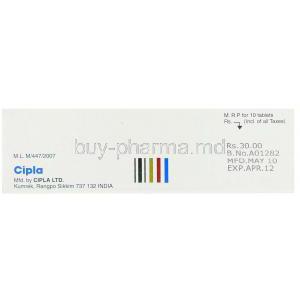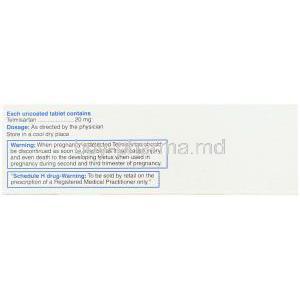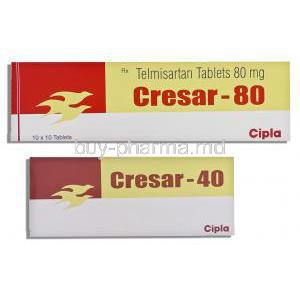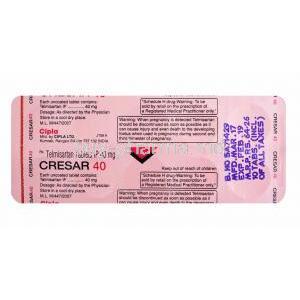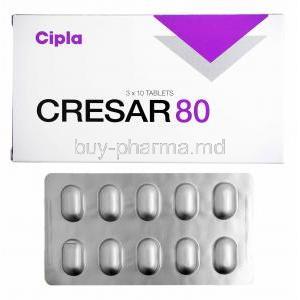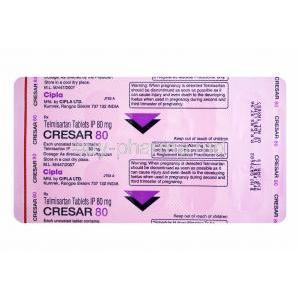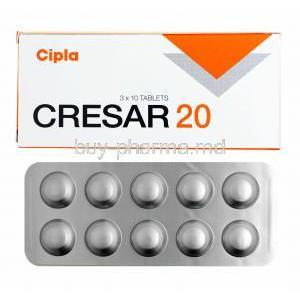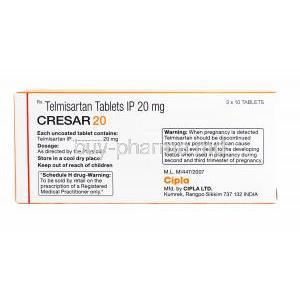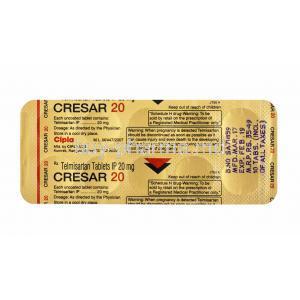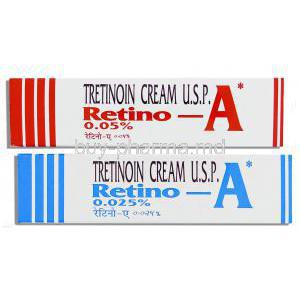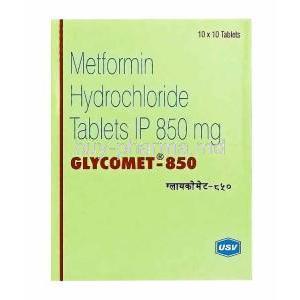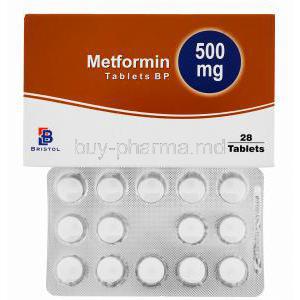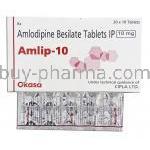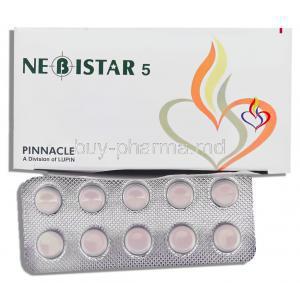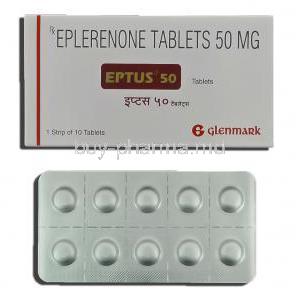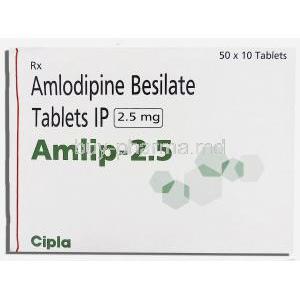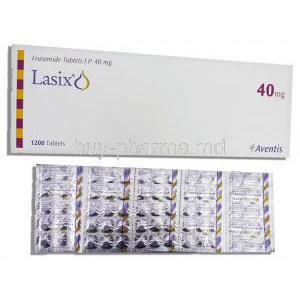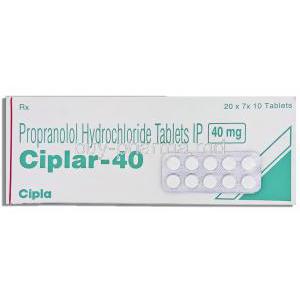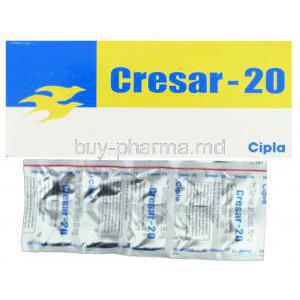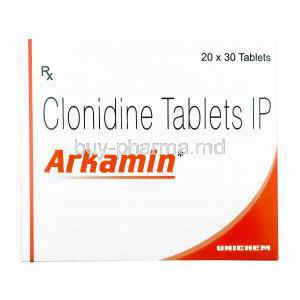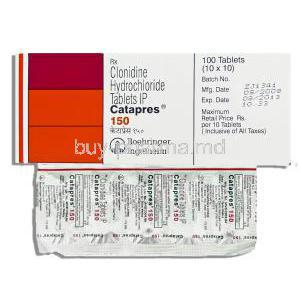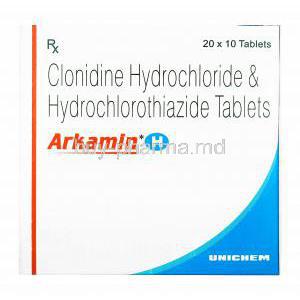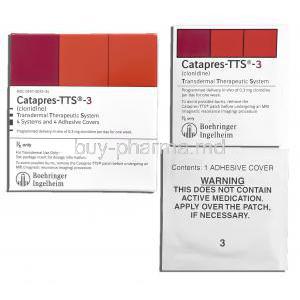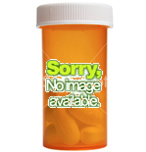Introduction
Overview of Cresar (Telmisartan)
Cresar, containing the active substance Telmisartan, is a prescription medication widely used for the regulation of blood pressure and cardiovascular protection. As part of a modern therapeutic regimen, it offers long-term benefits in reducing the risks associated with hypertension and related vascular disorders.
Therapeutic Class: Angiotensin II Receptor Blocker (ARB)
Telmisartan belongs to the pharmacological class known as Angiotensin II receptor blockers (ARBs). These agents work by impeding the binding of angiotensin II, a potent vasoconstrictor, to its receptors. By doing so, they reduce vascular resistance, facilitating better circulation and cardiac workload reduction.
Clinical Importance in Hypertension and Cardiovascular Disease
Hypertension remains a silent yet formidable risk factor for strokes, myocardial infarctions, and renal failure. Cresar provides a cornerstone therapy, often chosen for its efficacy and tolerability in long-term cardiovascular disease management.
Composition
Active Ingredient: Telmisartan
The principal component of Cresar is Telmisartan, an ARB with a prolonged duration of action, allowing once-daily administration.
Available Strengths and Formulations
- 20 mg tablets
- 40 mg tablets
- 80 mg tablets
These varying strengths allow for tailored treatment strategies depending on patient requirements.
Inactive Ingredients and Excipients
Excipients may include microcrystalline cellulose, magnesium stearate, and other stabilizing compounds designed to ensure drug stability, absorption, and patient compliance.
Mechanism of Action: How Telmisartan Works
Blockade of Angiotensin II Type 1 (AT1) Receptors
Telmisartan selectively binds to AT1 receptors, preventing angiotensin II from exerting its vasoconstrictive and sodium-retentive effects. This receptor antagonism helps maintain vascular relaxation and fluid balance.
Effects on Vasoconstriction and Aldosterone Secretion
By blocking angiotensin II, Cresar reduces vasoconstriction and decreases aldosterone release, leading to lower sodium and water retention, ultimately reducing blood pressure.
Reduction of Blood Pressure and Cardiovascular Strain
The sustained lowering of arterial tension reduces the strain on cardiac tissue, mitigating the risk of hypertrophy and ischemic events.
Renoprotective and Cardioprotective Effects
Beyond blood pressure control, Telmisartan offers protective effects on renal microcirculation and cardiac muscle remodeling, particularly valuable in diabetic and hypertensive populations.
Approved Medical Uses
Treatment of Primary Hypertension
Cresar is a first-line choice for controlling essential hypertension, either as monotherapy or in combination with other agents.
Reduction of Cardiovascular Risk in High-Risk Patients
In patients predisposed to cardiovascular complications, Telmisartan helps minimize the probability of severe vascular events.
Management of Patients with Left Ventricular Hypertrophy
By reducing afterload, Cresar aids in regressing pathological cardiac hypertrophy, improving cardiac performance.
Prevention of Stroke, Myocardial Infarction, and Other Cardiovascular Events
Clinical studies have demonstrated its efficacy in decreasing the incidence of strokes and ischemic cardiac events among susceptible individuals.
Off-Label and Investigational Uses
Use in Diabetic Nephropathy and Proteinuria
Telmisartan has been utilized to slow the progression of renal damage in patients with diabetes, reducing proteinuria and preserving renal function.
Heart Failure Management (When ACE Inhibitors Not Tolerated)
For patients intolerant to ACE inhibitors, Cresar provides a viable alternative for long-term cardiac function support.
Potential Role in Metabolic Syndrome and Insulin Sensitivity
Emerging data suggest Telmisartan may exert favorable effects on glucose metabolism and lipid profiles, potentially aiding patients with metabolic syndrome.
Use in Patients with Chronic Kidney Disease
By preserving renal hemodynamics, Cresar can help reduce further deterioration in chronic kidney disease progression.
Dosage and Administration
Standard Adult Dosage Guidelines
The usual starting dose is 40 mg once daily, which may be titrated up to 80 mg if required.
Titration and Individualized Therapy
Dosage adjustments should be guided by blood pressure response and overall tolerability.
Dosage Adjustments in Renal or Hepatic Impairment
Patients with hepatic dysfunction may require lower doses, while renal impairment should prompt close monitoring.
Administration Instructions
Cresar can be taken with or without food. The tablet should be swallowed whole with water, ideally at the same time daily for consistency.
Missed Dose Management
If a dose is missed, it should be taken as soon as remembered unless it is close to the time of the next dose. Double dosing should be avoided.
Administration in Special Populations
Elderly Patients
Older adults may exhibit heightened sensitivity to antihypertensive effects. Regular monitoring of renal function and electrolytes is advised.
Pregnant Women
Telmisartan is contraindicated during pregnancy, particularly in the second and third trimesters, due to risks of fetal toxicity.
Nursing Mothers
Excretion into breast milk has been observed; alternative therapies are recommended to protect nursing infants.
Pediatric Patients
The safety and efficacy of Telmisartan in children have not been firmly established, and its use remains limited to clinical discretion.
Side Effects of Cresar (Telmisartan)
Common Side Effects
- Dizziness
- Fatigue
- Hypotension
- Gastrointestinal upset
- Back pain
Less Common Side Effects
- Sinusitis
- Musculoskeletal pain
- Insomnia
Serious Side Effects
- Hyperkalemia
- Renal impairment
- Angioedema
- Syncope
Risk Factors Influencing Adverse Event Likelihood
Patients with pre-existing renal disease, diabetes, or concurrent use of potassium-sparing agents are more susceptible to serious adverse reactions. Close supervision is essential for high-risk individuals.
Drug Interactions
Interaction with Other Antihypertensive Agents
Telmisartan may amplify the effects of other blood pressure–lowering drugs, such as:
- Diuretics, which increase the risk of excessive fluid and electrolyte loss.
- Beta-blockers, which can potentiate bradycardia and hypotension.
- Calcium channel blockers, potentially leading to additive vasodilation and blood pressure reduction.
When combined, careful titration and patient monitoring are necessary to prevent undue drops in blood pressure.
Interaction with ACE Inhibitors and Renin Inhibitors
Concurrent use of Telmisartan with ACE inhibitors or direct renin inhibitors is discouraged in many cases. This combination increases the likelihood of:
- Hyperkalemia
- Renal dysfunction
- Severe hypotension
Triple therapy with an ACE inhibitor, ARB, and renin inhibitor is not recommended due to high adverse event risk.
Interaction with Potassium Supplements and Potassium-Sparing Diuretics
Telmisartan elevates serum potassium levels. Combining it with potassium supplements or potassium-sparing diuretics such as spironolactone may result in dangerous hyperkalemia. Routine monitoring of serum potassium is strongly advised.
Interaction with NSAIDs and Impact on Renal Function
Nonsteroidal anti-inflammatory drugs (NSAIDs) may blunt the antihypertensive efficacy of Telmisartan and increase the risk of renal impairment. The elderly, dehydrated patients, or those with pre-existing renal insufficiency face a particularly heightened risk.
Interaction with Lithium and Digoxin
Co-administration with lithium may increase serum lithium concentrations, leading to toxicity. Symptoms include tremors, confusion, and renal dysfunction. Additionally, digoxin plasma levels may rise when taken with Telmisartan, necessitating close therapeutic monitoring.
Contraindications
Hypersensitivity to Telmisartan or Excipients
Patients with a known allergy or hypersensitivity to Telmisartan or its inactive components must avoid Cresar to prevent severe reactions.
Pregnancy, Especially Second and Third Trimesters
Telmisartan is contraindicated during pregnancy, particularly after the first trimester, due to risks of fetal toxicity, renal dysfunction, and developmental defects.
Severe Hepatic Impairment or Cholestasis
Patients with severe liver disease or biliary obstruction should not take Telmisartan, as metabolism and excretion are significantly compromised.
Bilateral Renal Artery Stenosis
In patients with bilateral renal artery stenosis, Telmisartan can cause severe reductions in renal function, leading to acute kidney injury.
Warnings and Important Precautions
Risk of Symptomatic Hypotension
Patients with volume depletion or on diuretics may experience symptomatic hypotension, presenting as dizziness, fainting, or syncope.
Monitoring Requirements for Renal Function and Serum Potassium
Regular evaluation of renal function and potassium levels is essential, particularly in those with existing renal impairment, diabetes, or concurrent drug use affecting potassium balance.
Caution in Patients with Diabetes and Concomitant Use of Aliskiren
The combination of Telmisartan with aliskiren in diabetic patients significantly increases risks of renal dysfunction, hypotension, and hyperkalemia, and is generally avoided.
Risk of Angioedema and Hypersensitivity Reactions
Though rare, angioedema involving the face, lips, and throat can occur. Immediate discontinuation is warranted if such symptoms develop.
Importance of Adherence to Therapy
Consistent adherence to Telmisartan ensures long-term cardiovascular benefits, reducing risks of stroke, myocardial infarction, and renal deterioration.
Careful Administration
Patients with Renal Impairment
Close monitoring of serum creatinine and electrolytes is mandatory. Dose adjustments may be necessary.
Patients with Hepatic Impairment
Since Telmisartan is metabolized by the liver, those with hepatic impairment should be prescribed lower doses with heightened caution.
Patients with Volume Depletion
Individuals dehydrated or on aggressive diuretic therapy are predisposed to profound hypotension. Gradual correction of volume status is recommended before initiating therapy.
Patients with Cardiac Conduction Abnormalities
Although not a direct arrhythmogenic agent, Telmisartan should be administered carefully in patients with conduction system disorders, especially when used alongside other cardiac medications.
Overdose and Emergency Management
Clinical Manifestations of Overdose
Overdose may result in severe hypotension, tachycardia, or bradycardia. Collapse and shock have been reported in extreme cases.
Supportive Treatment and Monitoring Measures
Emergency care involves:
- Monitoring of blood pressure, renal function, and electrolytes
- Administration of intravenous fluids
- Positioning the patient supine with legs elevated to support perfusion
Role of Hemodialysis and Emergency Interventions
Hemodialysis is ineffective in removing Telmisartan due to its high plasma protein binding. Supportive care remains the cornerstone of management.
Storage and Handling Precautions
Recommended Storage Temperature and Humidity Control
Store Cresar tablets at room temperature, ideally below 25°C. Avoid high humidity environments to preserve stability.
Protecting Tablets from Moisture and Direct Sunlight
Keep tablets in their original blister packaging until use. Exposure to sunlight or moisture can compromise efficacy.
Safe Handling and Disposal Instructions
Unused or expired medication should be disposed of safely in accordance with local pharmaceutical disposal regulations. Tablets should be kept out of reach of children to prevent accidental ingestion.
Cresar, Telmisartan FAQ
- What is Cresar used for?
- What is the composition of eritel 20 mg?
- What are the side effects of eritel ln 80?
- Is Eritel a blood thinner?
- What is the use of eritel 50 mg Tablet?
- What is telmisartan drug used for?
- What to avoid when taking telmisartan?
- Which is better, telmisartan or amlodipine?
- When is the best time to take telmisartan tablets?
- What is the disadvantage of telmisartan?
- What are the positive effects of telmisartan?
- Can telmisartan harm the kidneys?
- Does telmisartan cause sleep problems?
- Can telmisartan cause weight gain?
- Can I take amlodipine and telmisartan together?
- Is telmisartan a blood thinner?
- Can I take telmisartan in the morning and amlodipine at night?
- Does telmisartan make you pee at night?
- What foods should you avoid while taking telmisartan?
- Can telmisartan raise cholesterol?
- How quickly does telmisartan work?
- Can I eat bananas while taking telmisartan?
- How does telmisartan affect aging?
- What are the calming effects of telmisartan?
- What is the success rate of telmisartan?
- Why do bodybuilders take telmisartan?
- Can telmisartan cause memory loss?
- Does telmisartan increase energy?
- Why telmisartan at night?
- What is the main side effect of telmisartan?
- What to avoid when taking telmisartan?
- Does telmisartan make you pee a lot?
- How much time does telmisartan take to work?
- Can telmisartan cause blurry vision?
- Can I drink coffee with telmisartan?
- Will telmisartan reduce heart rate?
- Does telmisartan increase testosterone?
What is Cresar used for?
The Cresar 40 Tablet is a medication that's often prescribed to help manage blood pressure and heart failure. By bringing blood pressure under control, it reduces the risk of heart attacks and strokes. It's been shown to help protect kidney function in people with diabetes.
What is the composition of eritel 20 mg?
Telmisartan
What are the side effects of eritel ln 80?
- Dizziness
- Headache
- Edema
- Hypotension
- Upper respiratory tract infection
- Hyperkalaemia
Is Eritel a blood thinner?
No
What is the use of eritel 50 mg Tablet?
Eritel B 40mg/50mg Tablet PR is designed to tackle blood pressure. It reduces blood pressure, which in turn plays a role in preventing heart attacks and strokes.
What is telmisartan drug used for?
Telmisartan is used alone or in combination with other medications to treat high blood pressure.
What to avoid when taking telmisartan?
- Do not take other medications used for appetite, asthma, colds and cough as it may increase blood pressure.
Which is better, telmisartan or amlodipine?
Telmisartan
When is the best time to take telmisartan tablets?
Bedtime
What is the disadvantage of telmisartan?
Telmisartan can increase potassium levels in the body.
What are the positive effects of telmisartan?
Telmisartan or TLM is a drug that blocks a highly selective angiotensin II type 1 receptor in the body. It stops inflammation responses and epithelial-mesenchymal transition.
Can telmisartan harm the kidneys?
No
Does telmisartan cause sleep problems?
- Sleeping difficulties
- Drowsiness
Can telmisartan cause weight gain?
No
Can I take amlodipine and telmisartan together?
Yes
Is telmisartan a blood thinner?
No
Can I take telmisartan in the morning and amlodipine at night?
Yes
Does telmisartan make you pee at night?
No
What foods should you avoid while taking telmisartan?
- Potassium supplements
- Potassium-containing salts
- Potassium foods
Can telmisartan raise cholesterol?
No
How quickly does telmisartan work?
About 3 hours after a dose
Can I eat bananas while taking telmisartan?
No
How does telmisartan affect aging?
No
What are the calming effects of telmisartan?
It blocks AT1 receptors in the brain and inhibits cerebral AT receptors.
What is the success rate of telmisartan?
79%
Why do bodybuilders take telmisartan?
Telmisartan doesn't just help improve how muscles work, it also boosts blood flow to the tiny vessels within these muscles.
Can telmisartan cause memory loss?
Yes
Does telmisartan increase energy?
Yes
Why telmisartan at night?
Telmisartan can improve sleep.
What is the main side effect of telmisartan?
Dizziness, lightheadedness, or fainting
What to avoid when taking telmisartan?
Does telmisartan make you pee a lot?
Yes
How much time does telmisartan take to work?
3 hours
Can telmisartan cause blurry vision?
Yes
Can I drink coffee with telmisartan?
Yes
Will telmisartan reduce heart rate?
No
Does telmisartan increase testosterone?
It can.

